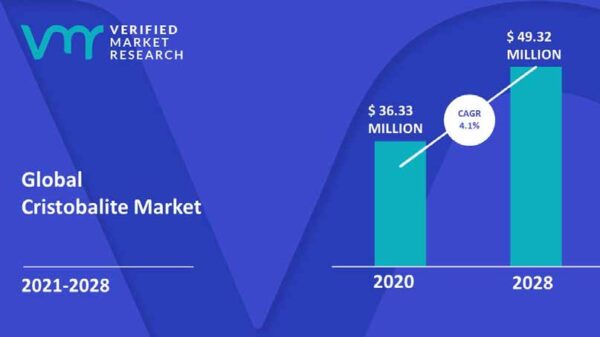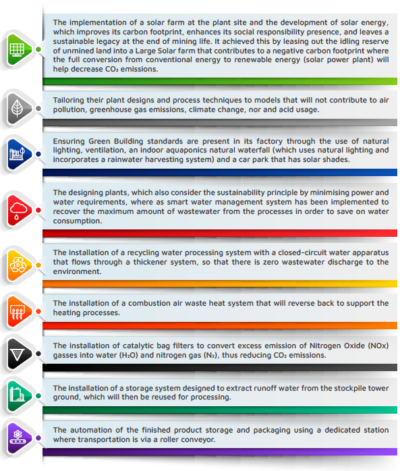
This site
is mobile
responsive

Industry Overview
Cristobalite is a substance produced from High Purity Silica (HPS) sand, and is characterised by its high abrasion resistance and strong white pigmentation. Cristobalite is a polymorph (any substance or mineral that forms different types of crystal) of respirable crystalline silica (extremely small particles) that have the same chemical compound (silicon dioxide or SiO2) which are formed at extremely high temperatures of more than 1,200oC. Cristobalite can be found in the ashes of volcanic eruptions, and in a relatively smaller number of rock types (limited to specific geographic regions). It is composed of the same elements as quartz but with a different crystal structure, making it a separate mineral. Cristobalite is also known as engineered quartz. The preparation method comprises of ore dressing, concentration, heating and calcining. Cristobalite is highly suitable for use in various applications, including exterior wall paints, road markings, kitchen top coatings, glass and ceramics, foundry casting, metallurgy, industrial chemicals as well as for other uses including adhesives, sealants, polishing, and abrasives.
The Market
The size of the cristobalite market was valued at USD36.33 million (RM168.42 million) in 2020, and is projected to reach USD49.32 million by 2028, growing at a compound annual growth rate (CAGR) of 4.1% from 2021 to 2028. The increasing rate of building construction across the world is driving the demand for artificial stones which is contributing to the growth of the cristobalite market.

Featured Player of The Industry
Terengganu, Malaysia is home to the largest silica sand reserve in Southeast Asia, with more than 300 million tonnes of high-grade silica deposits. TRG Silica (Marang) Sdn. Bhd. (TSM) a subsidiary of Terengganu Industrial Minerals Group (TIM) – will be the first and largest cristobalite manufacturer, not only for the Terengganu Silica Valley development but also for Asia and Oceania. The project will be developed over three phases: the company’s first phase will be in operation by 2024, the second phase production by 2025, and the third phase targeted to be completed by 2027.
The TSM project will produce cristobalite girts and flour powders offering one of the highest brightness levels of any similar mineral. Cristobalite is characterised by high brightness, relatively high Mohs hardness of 6.5, and a low refractive index, as well as having properties such as easy wetting, high inertness in various media and transparency for UV-radiation.
TIM being part of the largest silica mining in Asia and Oceania, have a material opportunity to use renewables in order to lower costs, improve safety, reliability and sustainability, and to mitigate risks and ultimately gain a competitive advantage.
Implementing Sustainable Strategies
Sustainable mining and processing refers to the development of non-metallic mineral and energy resources in order to attain a balance between economic development, environmental protection, community benefits, and government responsibilities all in a way that maximises economic and social benefits while simultaneously minimising the environmental impacts of mining integrating environmental, economic, safety, and community aspects in all phases of a project.
As a player in the advanced silica industry, TSM realised the importance of finding at balance between profitability and environmental sustainability. It found that the balancing can be achieved through responsible mining and processing, guided by sustainable resource development, best practices in environmental management and recycling of non-metallic mineral-based products such as: Besides sustainability, mining activities in Malaysia will also focus on value-added aspects of the industry that go beyond extracting raw minerals. These will involve integration of the entire upstream, midstream, and downstream activities, to benefit the local economy. Efforts will be channelled to ensure that mining activities are carried out in a sustainable manner – and to achieve this, new potential mining areas will be identified with greater accuracy for better development planning.
